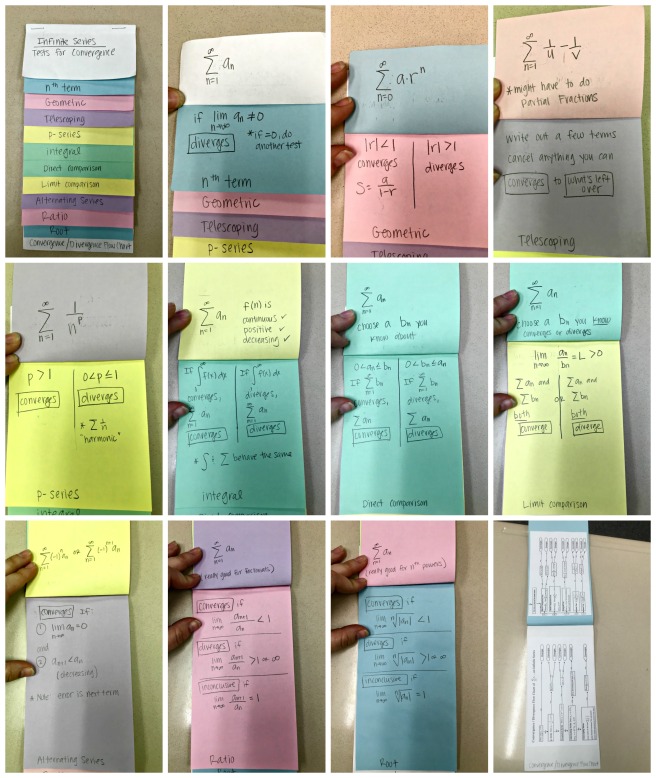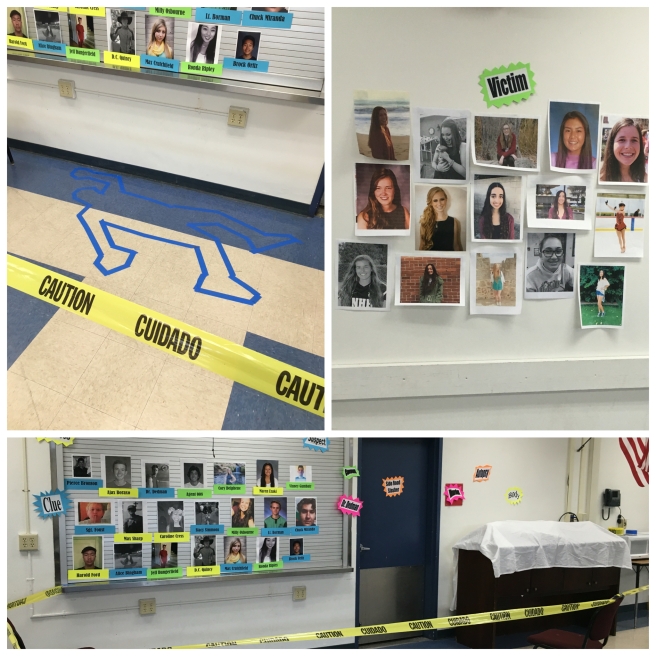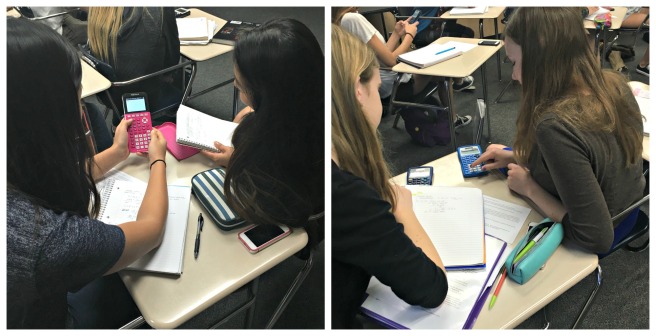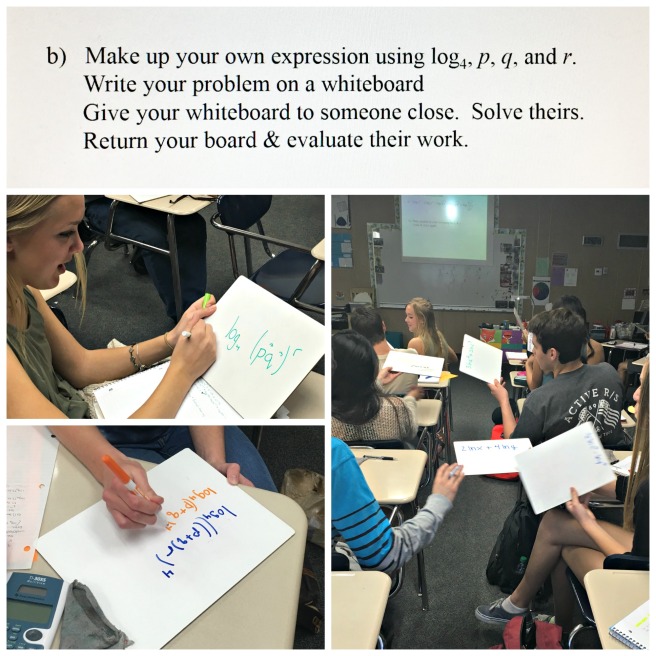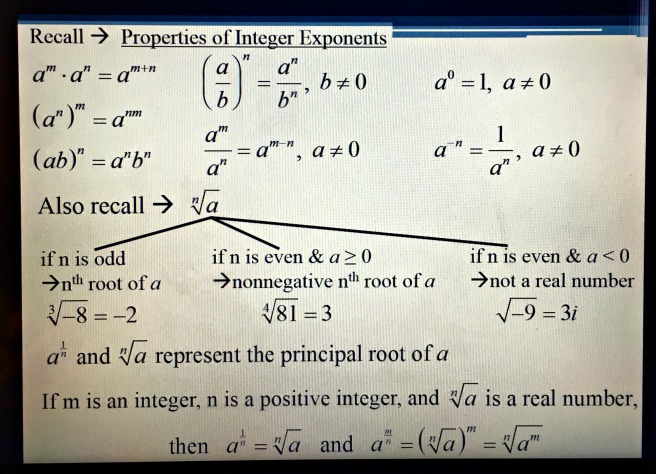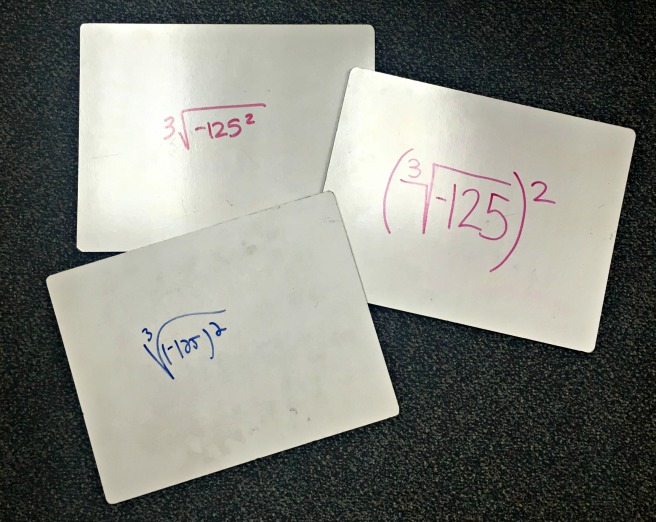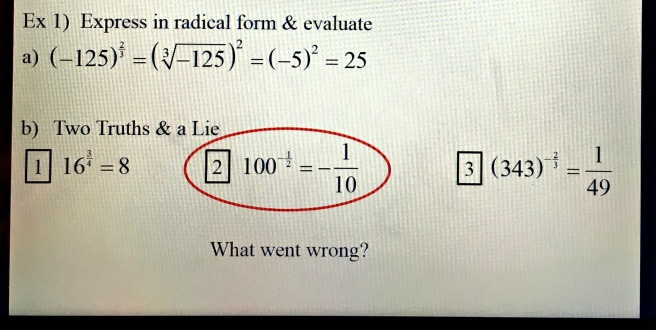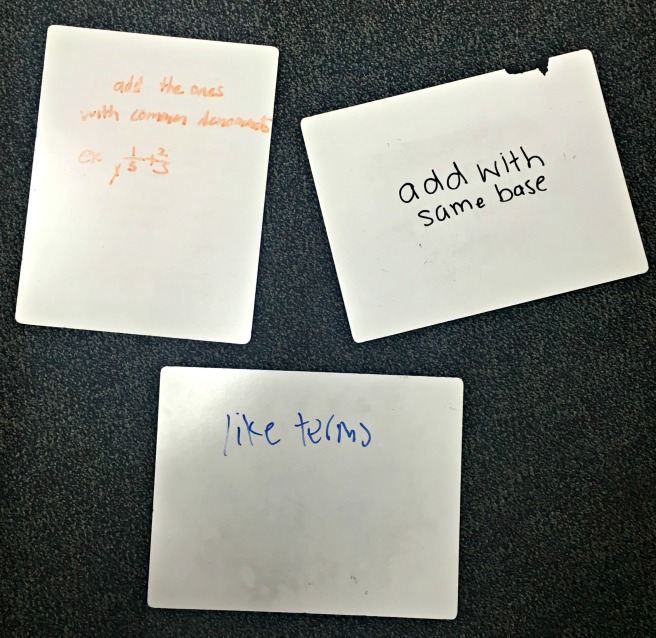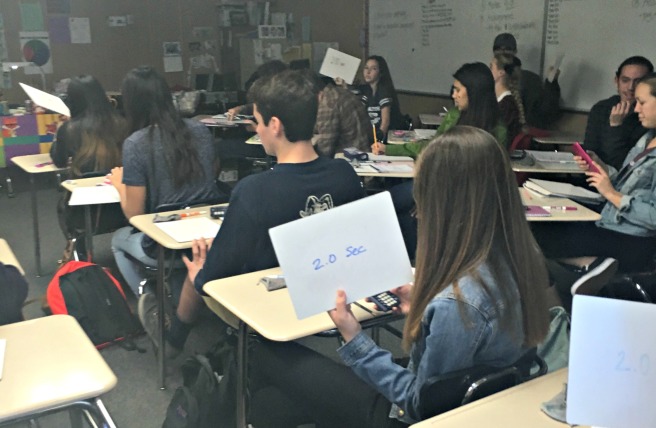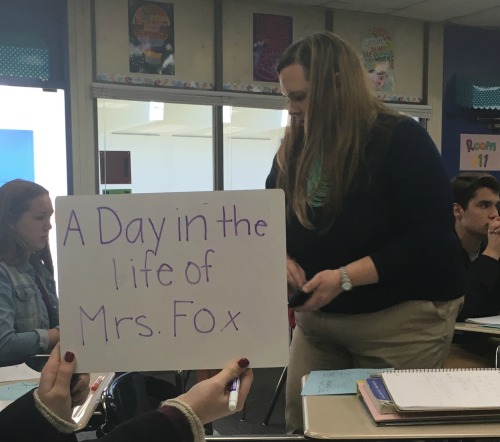
(Here is my #MTBoS Assignment #1 – Tuesday, January 12, 2016 Total disclaimer, not all days are this crazy, but many of them are!)
5:45 Alarm goes off
6:05 Finally roll out of bed (ooh, that snooze button) and start getting ready
6:31 Go wake up my three kids, go back to getting ready
6:38 Go back and wake daughter up again. (Two thoughts to self..1-I really need to buy alarms clocks for the kids on Amazon, 2-The blow dryer I picked up yesterday at Target is working great.) Boys start making their own breakfasts, I make mine and daughter’s and help son load up that dishwasher we forgot to do last night, and eat while doing a quick e-mail check.
7:22 We are all out the door, in the car and headed to school

7:37 Kids are dropped off in the loop and I am headed down the street. The line of cars to get into school at this time of the day is always so lovely (hope you sensed the sarcasm).

7:45 I am in my classroom, time to finish up the things that were on yesterday’s Things To Do post-it, put the finishing touches on the Calc project I am introducing today
8:03 Get in line for the only copy machine that will take colored paper that is working today
8:05 Short line, I am copying, woot! Drop by the main secretary’s desk to pick up something she printed in color for me, return the extra pink paper to the math office, remember I have to wrap that wedding gift for Faculty Club
8:22 It is back to my classroom, I need to update the side board with today’s agendas, locate the calc project notes for myself and remind myself how to introduce it and how to do the Excel spreadsheet, make a mistake, sort it out, look at precalc lesson for later today, draw picture from yesterday’s notes on the board that we didn’t quite have time for yesterday to do it justice
8:55 Time for class! Give Calc BC their warm-up quiz, call a colleague to answer his question about the precalc notes for today, go to stamp homework , get reminded that I am not stamping today (yep, oops!), talk about that problem from the notes from yesterday about rotating a region around a line that is parallel to an axis, answer lots of questions and what-ifs (this section is a doozy!). Introduce project, do a baby example and show how the Excel speadsheet works, set the students to work, they get into groups of their own choosing, and I rotate through the classroom checking in, offering advice and answering questions

10:03 Rinse, repeat. Remember to mention the previous classes “what-ifs” when going over that example from yesterday which inspire even more what-ifs.
11:04 Time for precalc, no time for homework questions today (Thoughts to self while I am teacning: bummer that notes take forever, I am probably taking extra time getting whiteboard feedback from them, maybe this chapter should have fill-in notes, I should talk with other precalc teachers about this idea soon for next year, and it is a good thing that we have an extra review day before the quiz)

11:58 Lunch! Time to find my math teacher friends and talk about things that have nothing to do with teaching
12:35 Head over across campus to a LAHS TOSA meeting we called ourselves. The Tech TOSA, English TOSA and Math TOSA are hashing out what is the best way to attack having practically all our students take the SBAC ICAs right at the beginning of second semester. We chat, catch up, think about the best way to schedule and borrow some carts of chromebooks from the social science teachers and we think about what our less technological colleagues will need from us in terms of an instruction guide. We each have our assignments and we are going to pow-wow back together next Friday. (Tech TOSA was super excited to hear about my #MTBoS assignment and is proud that I am getting my Twiiter on.)

2:00 We are done, I head back to classroom, run into department chair and I quickly fill him in on what we just met about, he fills some in on a couple of other things, I rush out to head to a different TOSA meeting
2:20 Head over to one of the middle schools for a Math TOSA meeting. We meet every Tuesday at this time. Today I and my two fellow TOSAs from each of the middle schools are joined by the assistant superintendent. We have much to discuss as first semester is coming to a close. We talk about SBAC ICA, registration and class placement, some philosophical questions about what teaching looks like at the elementary level versus the middle school level versus the highs school level (that is a heavy subject, I am going to have to spend some more brain time on that one). When assistant supe heads off, we take care of some other TOSA business, Modeling Monday at the elementary level and last minute newsletter ideas.
4:18 Meeting over, chat for 5 minutes in parking lot with fellow TOSA whose daughter (who I had as my student a few years back) has just started a semester in Spain
4:40 Finally pull in driveway, super weird traffic on the freeway on the way home (it is only three miles…sheesh!)
4:45 Head right back out the door after changing into some comfy jeans and grabbing my Starbucks cup, stop at Subway to pick up a $6 special of the day dinner (Thought to self: radio advertising is really working, I am only here because of the commercial I just heard), get to Starbucks a few minutes early, get bummed because the one big table is already taken, but at least there are available tables, get my iced tea and get ready
5:00 My first tutoring appointment arrives, it is a precalc student from another school, we go over lots of stuff from trig. My principal calls during the session, but I can’t pick up, shoot!
6:00 Get a text saying my person is running late. Not a total bust though since I can eat part of that aforementioned sandwich I picked up plus check that voicemail from the principal. Big table becomes available, I swoop in and set up camp for the rest of the evening.
6:25 Tutoree finally arrives, (that was some traffic!), we cram in lots of precalc learning in 35 minutes, we make sure to schedule his times for his upcoming final next week (he is from a different school too)
6:45 Hair is officially now in a messy bun
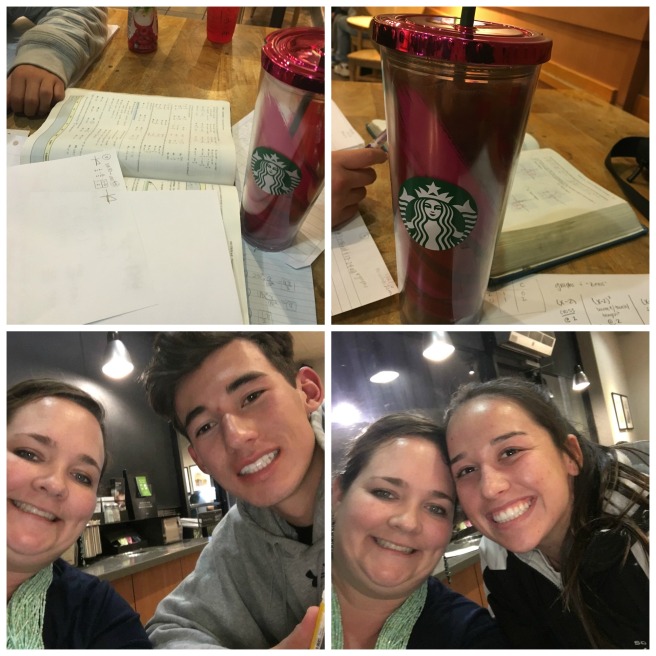
7:00 Third tutor of the evening is here. Advanced Math Trig student from my school. He forgot his notes stuff at school, nice. We manage…at least he has his book. We bust out lots of work going over previous sections as well as hitting the current section really hard. (I see this student twice a week, he lets me take a tutoring selfie with him, gotta love him).
7:40 I get refill of iced tea (Thought to self: super love my Starbucks gold card and free refills!)
8:00 Fourth tutor, Advanced Math Trig again, so I am already in the zone! I have tutored her for several years now, so we take a tutoring selfie too.
9:00 Finally done with my marathon tutoring session!! So, so drained. Head over to my mom and dad’s to get my kids. (They have been there ever since my mom picked them up from school at 2:30. This usually doesn’t happen…weird schedule today with husband having to take in a dinner with the big bosses that are in from Wisconsin. So blessed to have them live so close and have my mom be recently retired from teaching herself that she can do this for our family.) They are bathed and homework is all done too. I catch up on the news of the day on the short car ride home.
9:20 We all walk in the door, husband got home just 5 minutes before we did. Kids make their lunches for tomorrow. I get all the homework signed off like we do every night.
9:31 Kids are in bed (Thought to self: yikes that is late, oops!). I get to work…first up, final edits on my To Infinity and Beyond newsletter that goes out tomorrow morning. Husband is watching the state of the union address, I am half listening. Add a section to request ideas for our net Modeling Monday, add a new link for Mathematics Framework from the CA Department of Ed, read over it two times, and schedule it to go out in the morning.
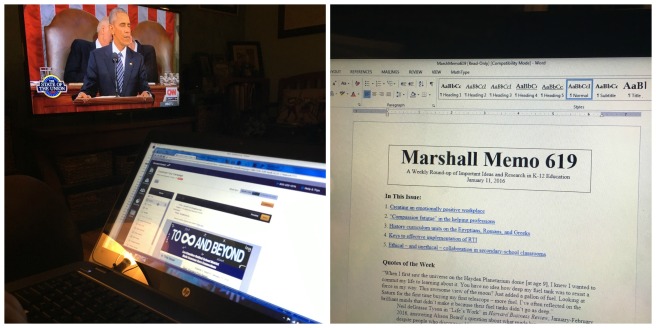
10:06 Catch up on emails, send out a few dropbox file requests for yearbook pictures (yep, I am the gal who foolishly volunteered to create the 5th grade yearbook), read the Marshall Memo I got this morning (Thought to self: Good stuff to think about, maybe for next time’s newsletter), check bank, Facebook (for just 5 minutes…okay, 8), back to emails, look over Coinstar Modeling Monday lesson I am previewing with the 4th and 5th grade teachers at my kids elementary school tomorrow (no pressure there).
11:04 Finally shut down computer, get out clothes for tomorrow, plug in phone (Thought to self: how in the world did it get all the way down to 17%? Probably all those pictures I and my students kept taking all day.)
11:35 Bed time (Thought to self as I am nodding off: I didn’t have time to write that precalc test I was supposed to, shoot…I will break news to the team tomorrow and promise to get it done on Wednesday.)
**When I choose this assignment for this day, I had no idea that the day would get so crowded. I guess it is because I kinda have three jobs…teacher, TOSA and tutor for my side gig. I truly do love all of my work, though, so I will keep at it. Here is I super funny thing I found out by taking on this assignment – I make all kinds of weird faces when I teach, maybe a good thing, maybe not. My husband says this is not a surprise to him. Another thing…the students I asked to take pictures of me teaching didn’t even blink an eye when I asked them to, I love those kids. One set of girls even made a little title on their whiteboard, too cute! I also had a fun thought that all jobs should have spots where the people around them just start clapping in appreciation at something well said like during the state of the union. I mentioned that to one of my calc classes yesterday, they dug it, they clapped a lot for me during the lesson – I admit it felt good!**

So, phew, there it is…a day in the life of Janelle Fox!
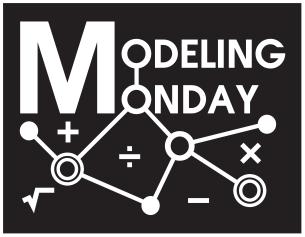
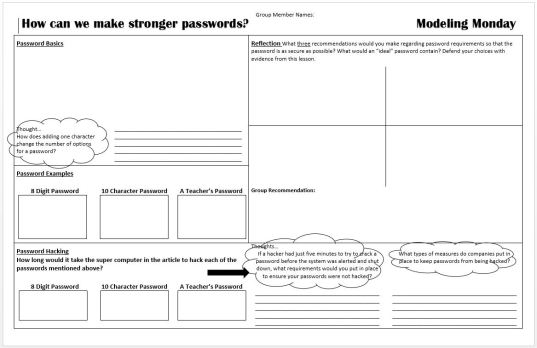 We like to have something for the students to create so we made this poster for each of the groups to fill out. Most teachers, including myself, had the poster rotate between the group members to give everyone a chance to write. The lesson itself first went into the basics of simple passwords. This was especially important for the lower grades who had not experienced the idea of probability yet. After this, we explored how many possibilities a password could have if it was just 8 digits. Then we calculated the possibilities for a 10 character password using lowercase letters, uppercase letters and numbers (basically my Netflix password!). Finally we considered a 13 character password using the same options as before with having 8 symbols added to the mix of choices (this is the password I use for all my “teacher” stuff). After these calculation we looked at how “safe” they were based on an article that says a super cluster of computers can cycle though as many as 350 billion guesses per second. The students were amazed at how “unsafe” some of their own passwords really were!
We like to have something for the students to create so we made this poster for each of the groups to fill out. Most teachers, including myself, had the poster rotate between the group members to give everyone a chance to write. The lesson itself first went into the basics of simple passwords. This was especially important for the lower grades who had not experienced the idea of probability yet. After this, we explored how many possibilities a password could have if it was just 8 digits. Then we calculated the possibilities for a 10 character password using lowercase letters, uppercase letters and numbers (basically my Netflix password!). Finally we considered a 13 character password using the same options as before with having 8 symbols added to the mix of choices (this is the password I use for all my “teacher” stuff). After these calculation we looked at how “safe” they were based on an article that says a super cluster of computers can cycle though as many as 350 billion guesses per second. The students were amazed at how “unsafe” some of their own passwords really were!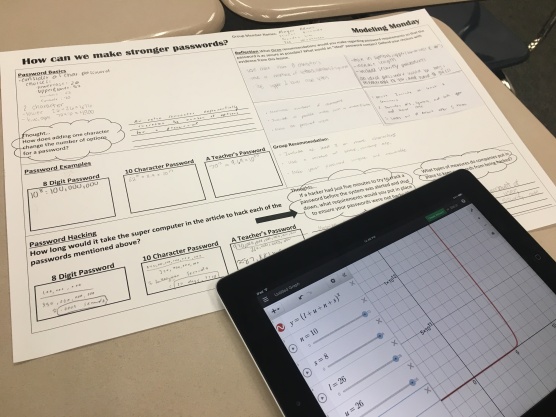
 The first part of the Modeling Monday lesson focused on graphical representations of data. This would include lots of discussion between students and would ask students questions they don’t normally get during a math lesson. The students were guided through a series of charts and maps all representing voting data from the 2012 Presidential Election. Each map had a new story to tell! Students were asked what they wondered about the chart breaking down the electoral college vote and the popular vote, how they could make the maps better, as well as make observations and look for patterns. They were asked how a certain map made them feel and if they preferred one map representation over another one. The discussions students had as they progressed from map to map were priceless. They were asked to think about the maps as a type of text to examine.
The first part of the Modeling Monday lesson focused on graphical representations of data. This would include lots of discussion between students and would ask students questions they don’t normally get during a math lesson. The students were guided through a series of charts and maps all representing voting data from the 2012 Presidential Election. Each map had a new story to tell! Students were asked what they wondered about the chart breaking down the electoral college vote and the popular vote, how they could make the maps better, as well as make observations and look for patterns. They were asked how a certain map made them feel and if they preferred one map representation over another one. The discussions students had as they progressed from map to map were priceless. They were asked to think about the maps as a type of text to examine. students to try their hand at district boundary drawing. After watching a short video explaining the concept of gerrymandering, students tried to create boundaries that satisfied a specific outcome. The students got really creative and clever about the district boundaries and were able to create so many viable options according to the constraints!
students to try their hand at district boundary drawing. After watching a short video explaining the concept of gerrymandering, students tried to create boundaries that satisfied a specific outcome. The students got really creative and clever about the district boundaries and were able to create so many viable options according to the constraints!
